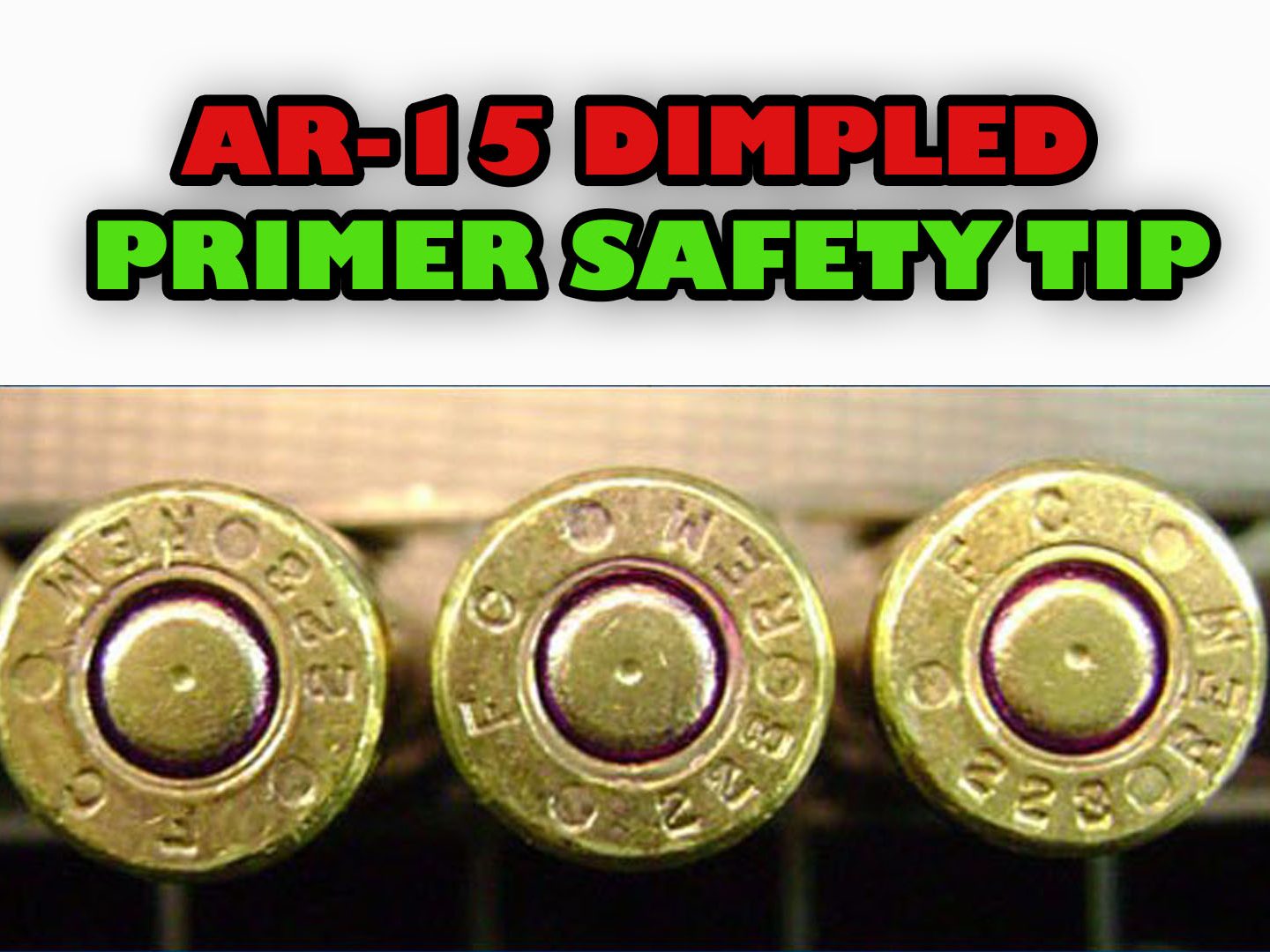
Today I want to share a AR-15 Rifle Safety Tip for those that have decided to keep an AR-15 rifle in Condition 3 (The chamber is empty and hammer is down with a charged magazine in the gun). Typically this is used for “trunk guns” or law enforcement patrol rifles. Occasionally someone in a rural area may choose this combination of firearm and condition of loading for a home defense firearm. However, living in a subdivision, I worry about over penetration so I use a shotgun instead.
Soooo, let’s say you hear a bump in the night and choose to get your AR and slingshot the charging handle and load a round into the chamber. You take whatever tactical measures your plan calls for and the situation resolves itself without your having to fire your rifle. You then drop your magazine, and eject the spent round. Most people will then put that round back in the magazine and topping it off to full capacity.
AR-15 Rifle Firing Pins Dimple Primers Upon Chambering
This seems a reasonable action doesn’t it? Unfortunately, due to the design of the AR, this could lead to a Negligent Discharge (ND) at some point in the future. You see, an AR-15 style firing pin is free floating and when you chamber a round the firing pin will continue forward and slightly contact the primer. If you look closely at the primer of your ejected round you will notice a slight firing pin indent on it. This is not even close to the indent needed to cause the primer to ignite, but it is enough to compress the priming pin cup closer to the anvil. If you keep using the same round as the first round of your ready magazine, eventually the CUMULATIVE impacts will be enough to cause the round to fire.
This is one reason military specification (mil-spec) primers for 5.56 are harder than civilian primers for .223.
The solution is simple. Since you are never going to be in a hurry to clear your firearm (always holster reluctantly), instead of topping off the mag with the ejected round, strip a random number of rounds out of the mag and replace the dimpled round in the middle of the pristine rounds. That way an undimpled primer is presented to the chamber. Obviously, you’re also going to have to rotate magazines after some point. But, I would suggest if you are chambering a live round for tactical situations that often without firing, your either have a VERY high risk lifestyle, or are doing something wrong, and in either case you should schedule more range time to practice and to burn off all those dented primers.
